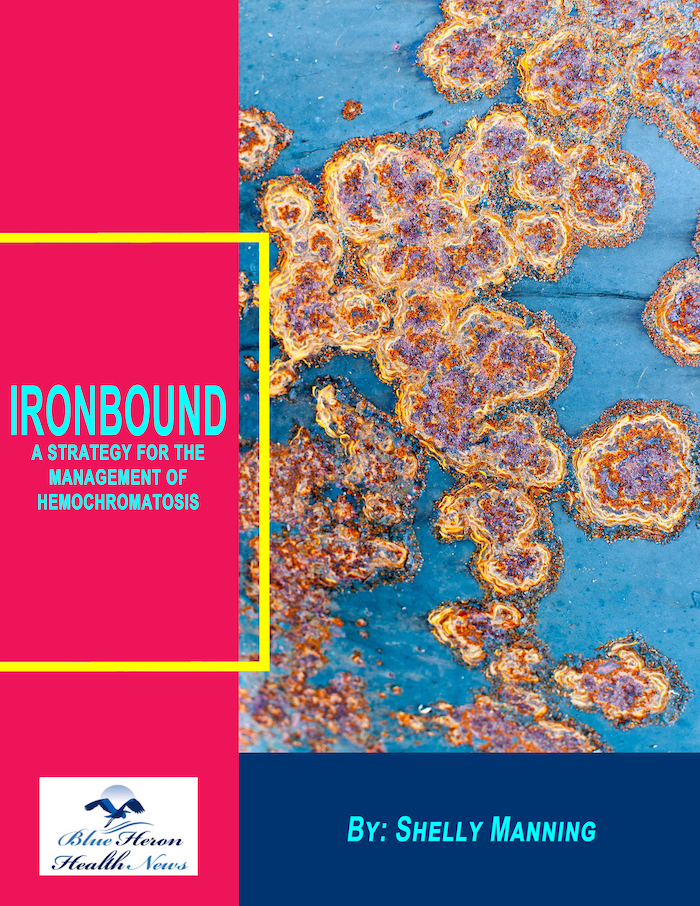
Ironbound™ A Strategy For The Management Of Hemochromatosis by Shelly Manning if you are suffering from the problems caused by the health condition of HCT due to excess amount of iron in your body then instead of using harmful chemical-based drugs and medications you are recommended to follow the program offered in Ironbound Shelly Manning, an eBook. In this eBook, she has discussed 5 superfoods and other methods to help you in reducing the level of iron in your body in a natural manner. Many people are benefited from this program after following it consistently.
What are the signs of over-chelation in hemochromatosis patients?
Over-chelation in hemochromatosis patients occurs when the iron levels are reduced too drastically, resulting in iron deficiency and, on the odd occasion, toxicity from the chelation drug itself. Hemochromatosis patients, unlike transfusion-dependent anemia patients, typically undergo phlebotomy rather than ongoing chelation, but chelation may be used in certain situations (e.g., phlebotomy-intolerant or secondary iron overload patients). Over-chelation is unsafe and must be closely monitored.
Signs and Symptoms of Over-Chelation in Hemochromatosis:
1. Iron Deficiency Symptoms
Weakness and fatigue
Dizziness or lightheadedness
Pallor (pale complexion)
Cold intolerance
Headache
Shortness of breath
Restless legs
Pica (craving to eat non-food items), i.e., clay or ice
2. Laboratory Results
Low serum ferritin (levels < ~30 ng/mL are a cause for concern)
Low transferrin saturation
Low hemoglobin or hematocrit (reflects anemia)
Low mean corpuscular volume (MCV) – microcytic anemia
Elevated zinc protoporphyrin (indicator of functional iron deficiency)
3. Organ or Drug-Specific Effects (notably with chelators like deferasirox or deferiprone):
Renal impairment (increasing creatinine)
Liver enzyme irregularities
Hearing or visual changes (with deferoxamine excess)
Neutropenia or agranulocytosis (with deferiprone)
Gastrointestinal symptoms (nausea, vomiting, diarrhea)
Clinical Red Flags:
Serum ferritin level <50 ng/mL in a patient on chelation or phlebotomy
Anemia in a patient with previously normal hemoglobin
Sudden reduction in fatigue or exercise tolerance
Prevention & Monitoring:
Ferritin, transferrin saturation, CBC, and renal/liver function should be monitored regularly
Hold chelation or reduce dose if ferritin approaches target range (50–100 ng/mL)
Avoid chelation in patients with normal or low iron stores
Monitor for symptoms of iron deficiency, especially fatigue and anemia
Conclusion:
Over-chelation in hemochromatosis is rare but severe. It can lead to iron deficiency anemia and organ toxicity if not watched carefully. Individualized treatment with regular laboratory assessment is necessary to avoid excessive depletion of iron.
Would you like a checklist to monitor iron safely during chelation or phlebotomy therapy?
Chelation therapy can potentially exert beneficial, as well as adverse, effects on kidney function, based on the chelating agent, the patient’s underlying renal status, and the monitoring adequacy during treatment.
The following is a discussion:
???? Potential Adverse Effects on Renal Function
1. Increased Renal Burden
Chelating agents bind with heavy metals and are excreted via the kidneys.
This imposes increased filtration and excretory burden on the kidneys, especially in patients with pre-existing renal dysfunction.
2. Risk of Nephrotoxicity
Some chelating drugs, especially EDTA in high doses, have been associated with acute renal failure or tubular injury.
Excessive administration or high-dose therapy may impair glomerular filtration rate (GFR).
3. Elimination of Essential Minerals
Chelating agents also have the ability to bind to and remove vital minerals like calcium, magnesium, and zinc, which can disrupt electrolyte balance and cause additional stress to renal function.
???? Monitoring and Prevention of Renal Damage
To minimize risk, clinicians usually:
Measure baseline renal function (serum creatinine, BUN, eGFR).
Monitor periodically during therapy.
Adjust doses in patients with chronic kidney disease (CKD) or reduced GFR.
Maintain adequate hydration to preserve kidney clearance.
Use oral agents (e.g., DMSA) instead of IV chelators when safer.
???? Potential Benefits in Specific Circumstances
In some patients with metal-induced nephropathy (e.g., lead nephrotoxicity), chelation therapy improves renal function by removing the toxic metal burden.
Studies have shown that long-term lead exposure is a cause of CKD, and lead extraction with EDTA can slow progression.
⚠️ Summary of Effects:
Effect\tDescription
✅ Potential benefit\tCan reduce kidney damage from heavy metal poisoning
⚠️ Risk Can cause kidney strain or injury with inappropriate use
???? Monitoring Requires ongoing kidney function monitoring throughout treatment
???? Avoid High-dose chelation in those with advanced CKD unless absolutely necessary
Would you like a patient handout or table of renal-safe procedures during chelation therapy?
Ironbound™ A Strategy For The Management Of Hemochromatosis by Shelly Manning if you are suffering from the problems caused by the health condition of HCT due to excess amount of iron in your body then instead of using harmful chemical-based drugs and medications you are recommended to follow the program offered in Ironbound Shelly Manning, an eBook. In this eBook, she has discussed 5 superfoods and other methods to help you in reducing the level of iron in your body in a natural manner. Many people are benefited from this program after following it consistently